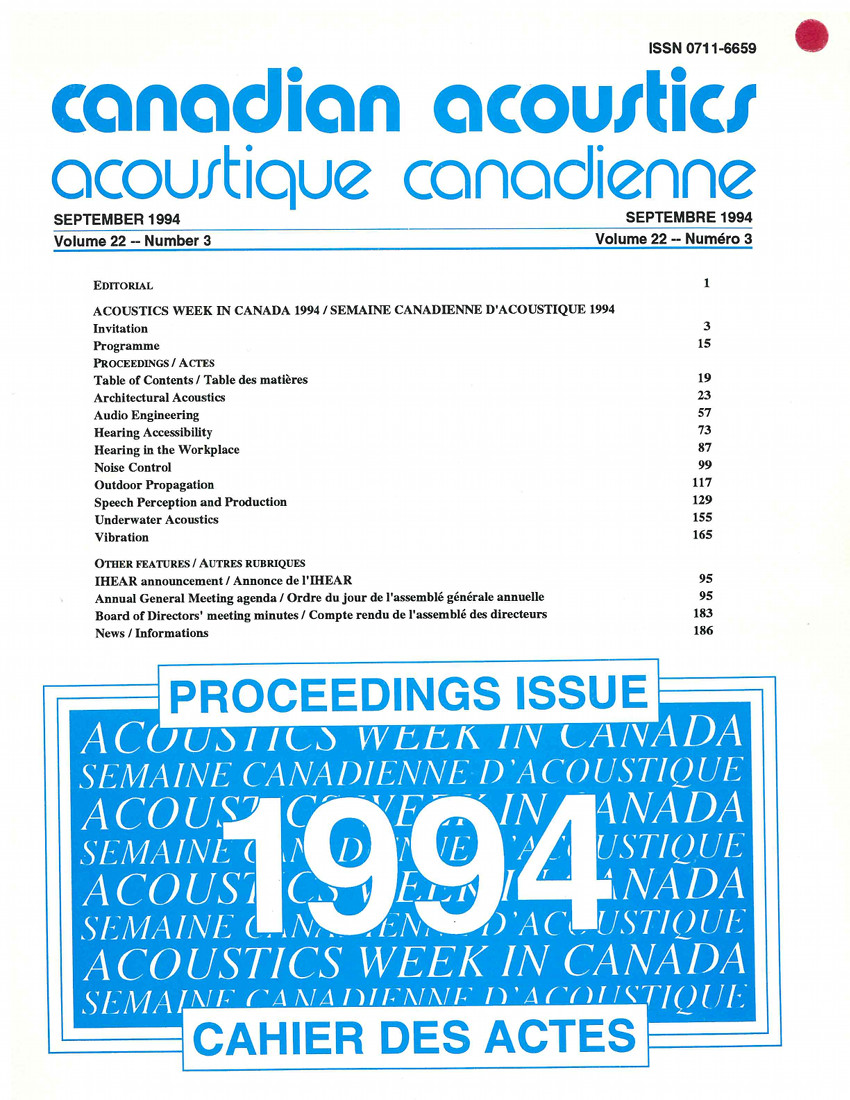Is the voiced-voiceless phonemic boundary influenced by an intensity level of the presentation
Keywords:
speech recognition, voiced-voiceless phonemic boundary, intensity level, voice onset time, acoustical cues, bilabial stop consonantsAbstract
The duration of voice onset time (VOT) is a dominant and decisive phonetic correlate of the phonemic (voiced) contrast for stop consonants in a word-initial position. Thus, the difference in the duration of VOT in naturally produced plosive consonants in the initial position of words serves to distinguish voiced and voiceless tokens spoken by native talkers of eleven languages (Lisker & Abramson, 1964). However, it was also found that beside the VOT other acoustical cues contribute to the phonemic boundary expressed by the VOT. For example, a longer VOT is required to judge a phoneme as voiceless when first formant (F1) transition is longer or F1 frequency onset is lower (Summerfield & Haggard, 1977). Moreover, an analysis of speech production data demonstrated that voiced and voiceless stop-consonants vary also in the peak intensity and in the duration of the burst of frication noise. The frication noise is of a longer duration and of a higher intensity at the release of a voiceless plosive (Klatt, 1975). Thus, the perceptual categorization of bilabial stop-consonants in word-initial position, while mostly relying on a difference in the VOT, should also depend on an acoustical cue such as loudness of the noise burst. Therefore, the present study examined the influence of the intensity level (sound pressure level) of a stimulus presentation on the voiced/voiceless phonemic boundary between bilabial stop consonants in the initial position of wordsAdditional Files
Published
How to Cite
Issue
Section
License
Author Licensing Addendum
This Licensing Addendum ("Addendum") is entered into between the undersigned Author(s) and Canadian Acoustics journal published by the Canadian Acoustical Association (hereinafter referred to as the "Publisher"). The Author(s) and the Publisher agree as follows:
-
Retained Rights: The Author(s) retain(s) the following rights:
- The right to reproduce, distribute, and publicly display the Work on the Author's personal website or the website of the Author's institution.
- The right to use the Work in the Author's teaching activities and presentations.
- The right to include the Work in a compilation for the Author's personal use, not for sale.
-
Grant of License: The Author(s) grant(s) to the Publisher a worldwide exclusive license to publish, reproduce, distribute, and display the Work in Canadian Acoustics and any other formats and media deemed appropriate by the Publisher.
-
Attribution: The Publisher agrees to include proper attribution to the Author(s) in all publications and reproductions of the Work.
-
No Conflict: This Addendum is intended to be in harmony with, and not in conflict with, the terms and conditions of the original agreement entered into between the Author(s) and the Publisher.
-
Copyright Clause: Copyright on articles is held by the Author(s). The corresponding Author has the right to grant on behalf of all Authors and does grant on behalf of all Authors, a worldwide exclusive license to the Publisher and its licensees in perpetuity, in all forms, formats, and media (whether known now or created in the future), including but not limited to the rights to publish, reproduce, distribute, display, store, translate, create adaptations, reprints, include within collections, and create summaries, extracts, and/or abstracts of the Contribution.


